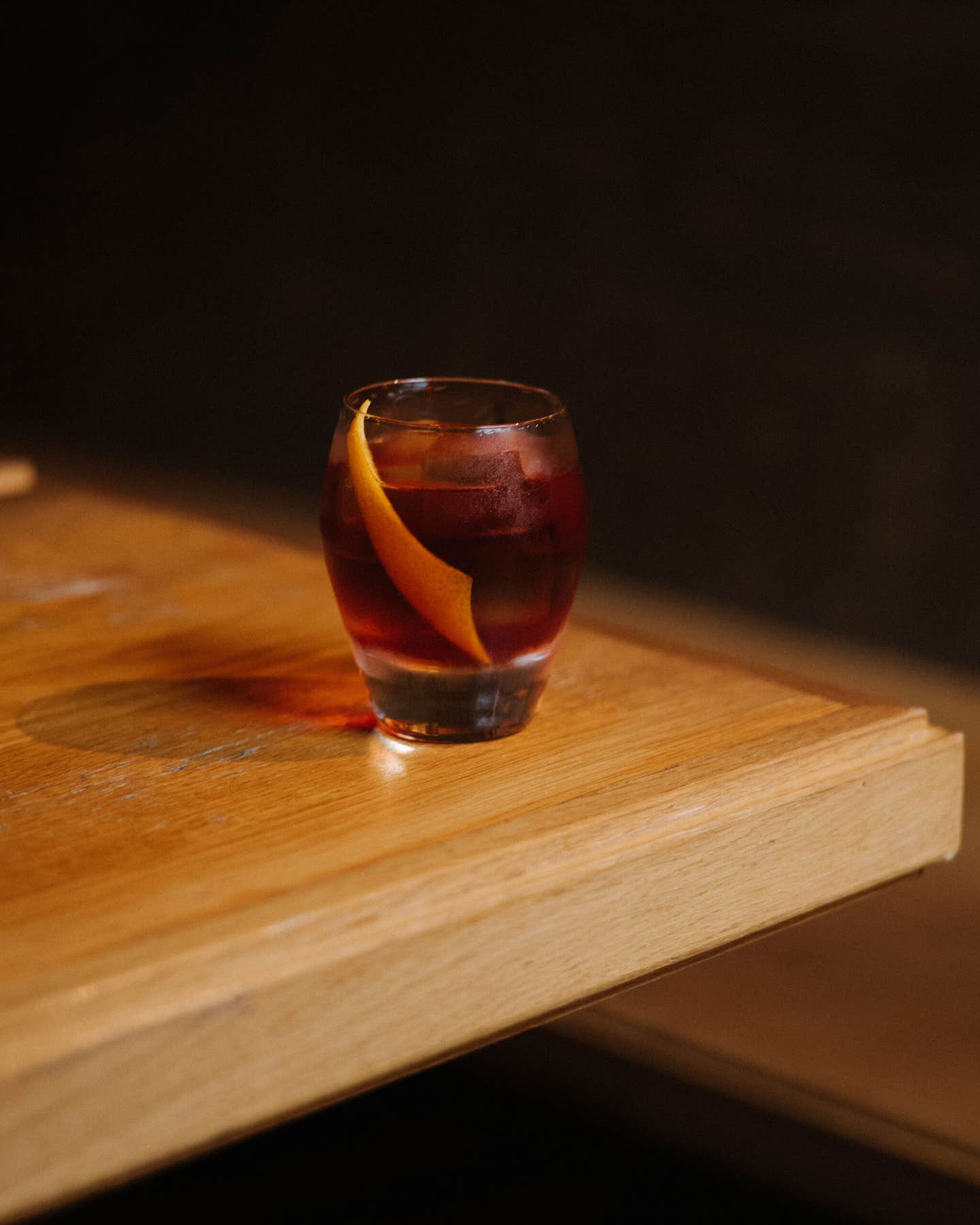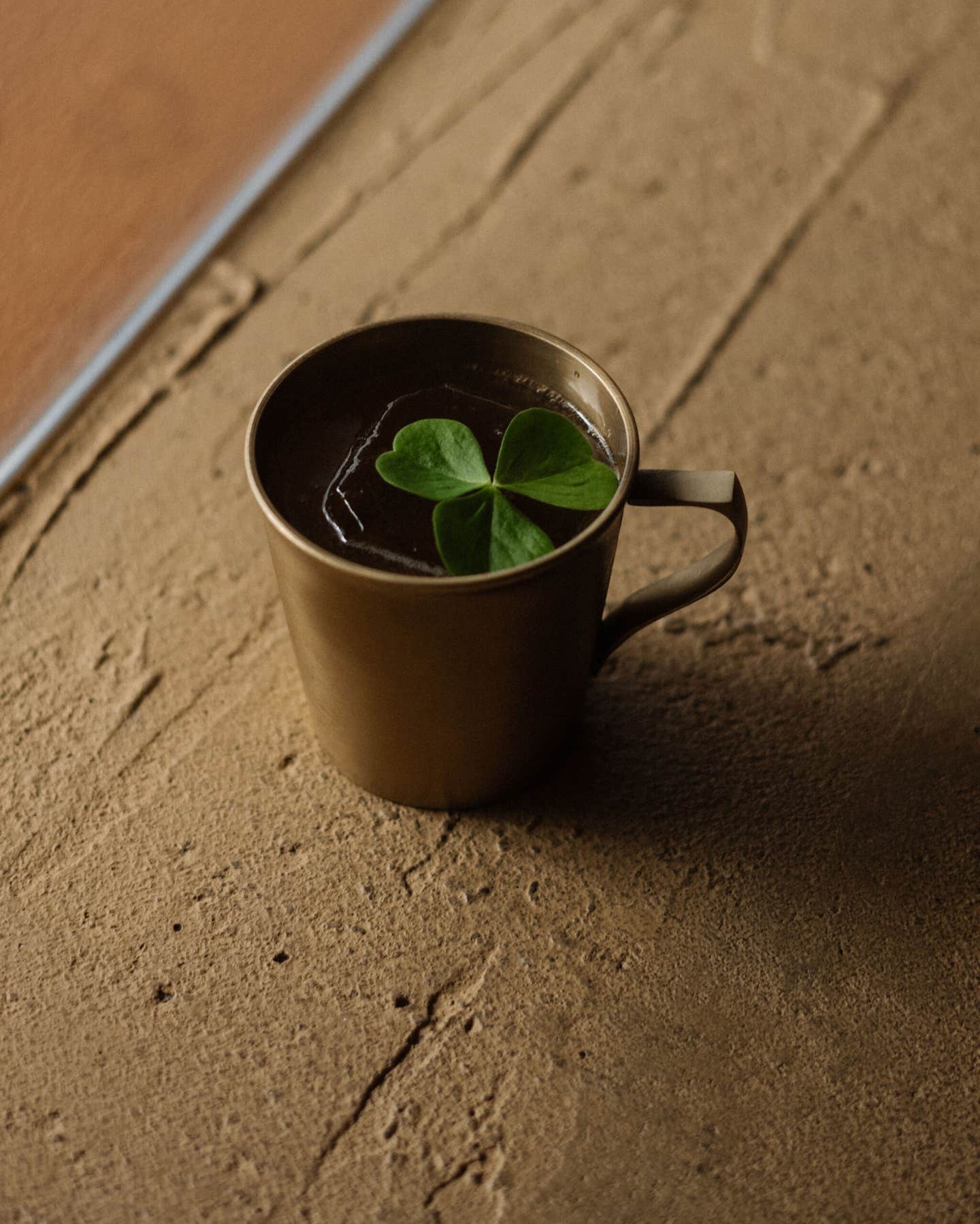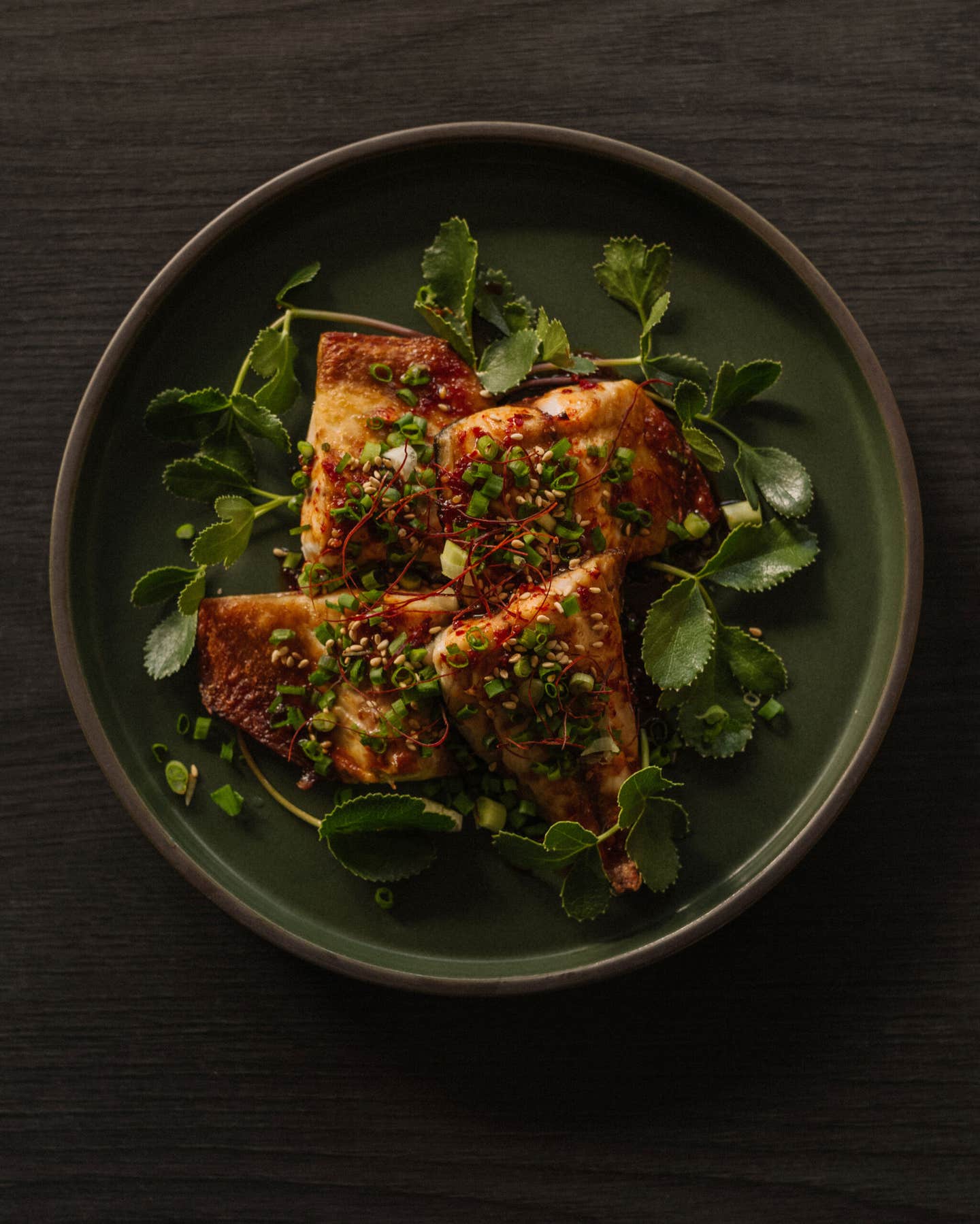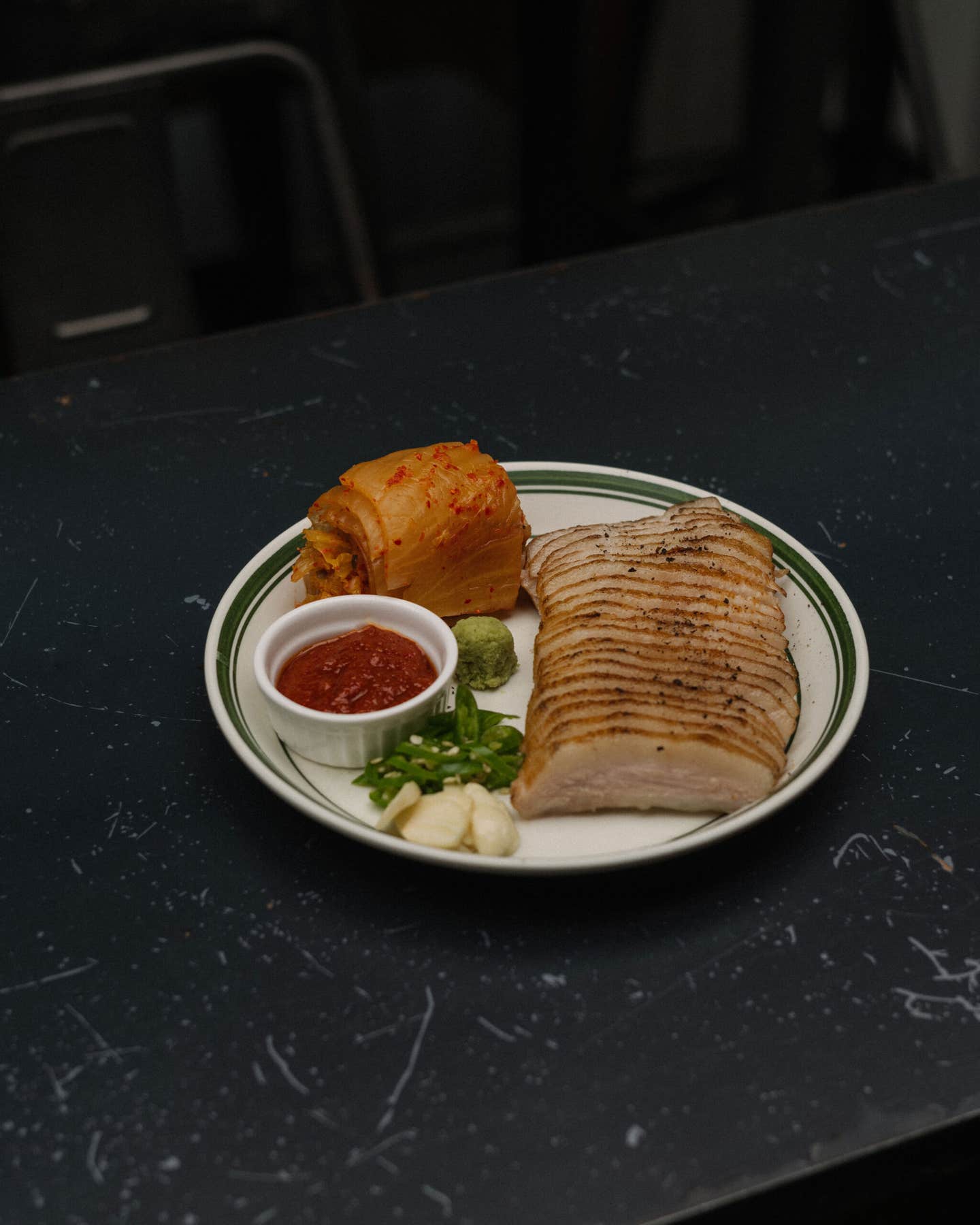Walk into any restaurant in South Korea on any night of the week and you’ll see them—rows of electric green bottles of soju, their screw caps scattered across the tables. The easy-drinking, mass-produced beverage is everywhere: poured into shot glasses, mixed with beer for somaeks, or knocked back between bites of smoky grilled meats or crisp-edged pajeon. Commercial soju, a far cry from its traditional origins, is South Korea’s most popular liquor, inextricably linked with the country’s culture. The spirit holds pride of place at everything from happy hours and company dinners to holidays and funerals. Top brands like Chamisul and Chum Churum appear prominently in K-dramas and in the hands of K-pop idols. Despite the liquor’s modern mass-market reputation, artisanal producers all over Korea are ushering in a new era of small-batch spirits that are deeply rooted in tradition while boldly looking to the future.
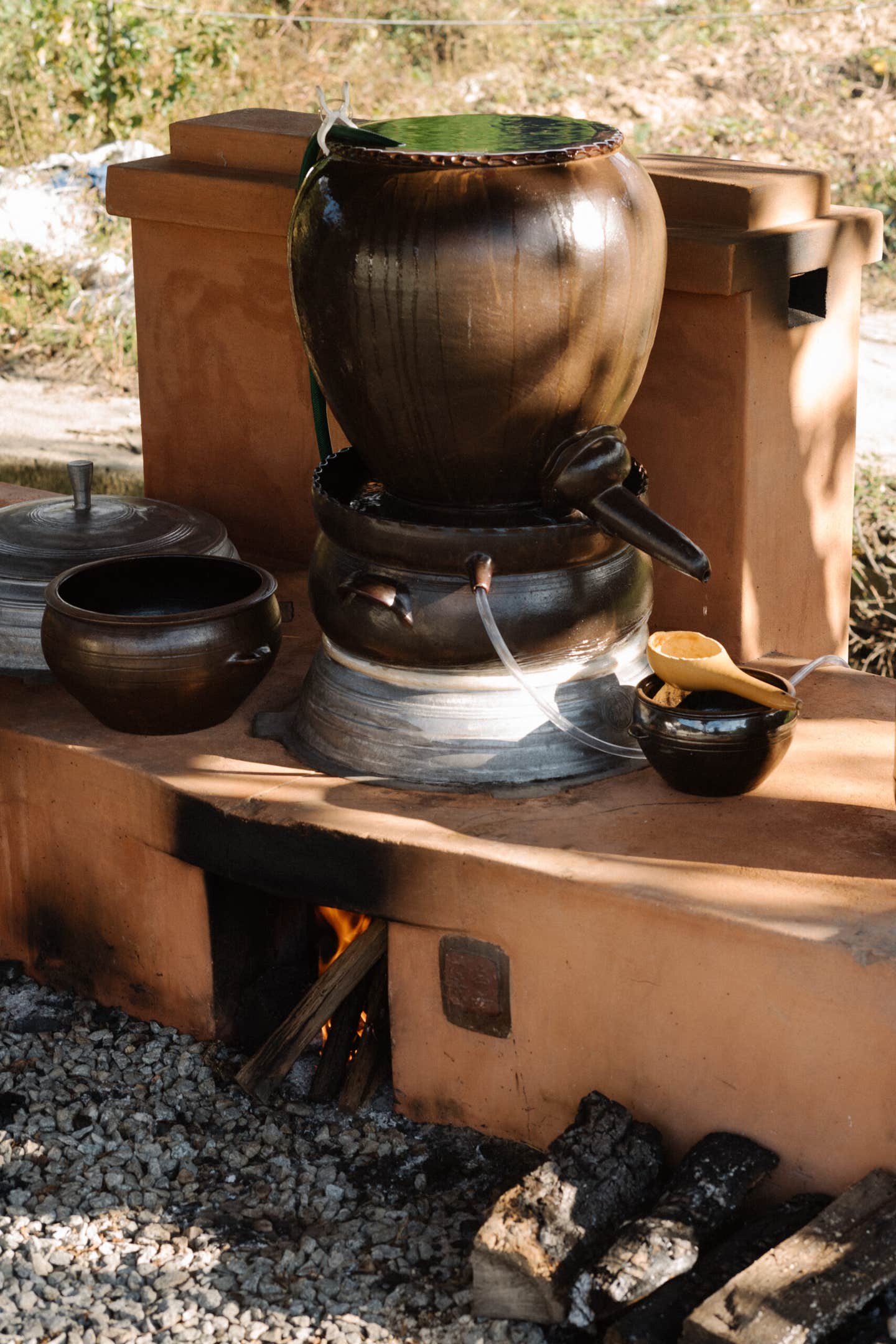

Koreans have been brewing alcohol, or sool, with rice for more than 2,000 years—and distilling soju since the 13th century—but today’s soju bears little resemblance to the original. Large corporate soju makers don’t actually ferment or distill anything; they source cheap ethanol made from tapioca or sweet potato and dilute it with chemical preservatives and artificial sweeteners. Traditionally, soju is made from rice, water, and nuruk (a wild fermentation starter), which together form a base spirit called wonju. When left to settle, wonju separates into two layers. The clear, golden liquor at the top is called cheongju or yakju, and can be enjoyed on its own or distilled into soju. The cloudy, sedimentary spirit at the bottom is called takju, and that can also be served as-is or can be mixed with water to make makgeolli. You can’t produce one type of sool without the other, and each is an exciting category in its own right.
During the Joseon Dynasty (1392–1910), sool production was traditionally the domain of women, along with fermenting kimchi and the three quintessential Korean sauces: gochujang (red chile paste), doenjang (soybean paste), and ganjang (soy sauce). Matriarchs passed down family recipes for these household staples, many of which called for unique local ingredients, but this transfer of knowledge was disrupted by Japanese occupation, when home brewing was outlawed in favor of industrial liquor production. The Korean War that followed almost wiped out the craft.


In 1965, facing food shortages, the South Korean government outlawed the use of rice in alcohol production. According to Hyunhee Park, author of Soju: A Global History, this move led to industry consolidation and the rise of mass-produced sool made with cheap alternative starches. Even after the rice ban was lifted in 1989, the changes stuck: Commercial makgeolli and soju continue to dominate the market and Korean drinking culture.
Recently, though, craft distilling is experiencing a revival, with the help of state support. Recognizing heritage liquors as a cultural asset—and a potentially lucrative industry—the South Korean government has begun offering tax benefits and subsidies to producers, and allowing them to sell products online directly to consumers, a privilege afforded to no other type of alcohol. This was a real boon during the pandemic, when two portmanteaus, homesool (“drink at home”) and honsool (“drink alone”), became the buzzwords of the moment for younger Koreans.
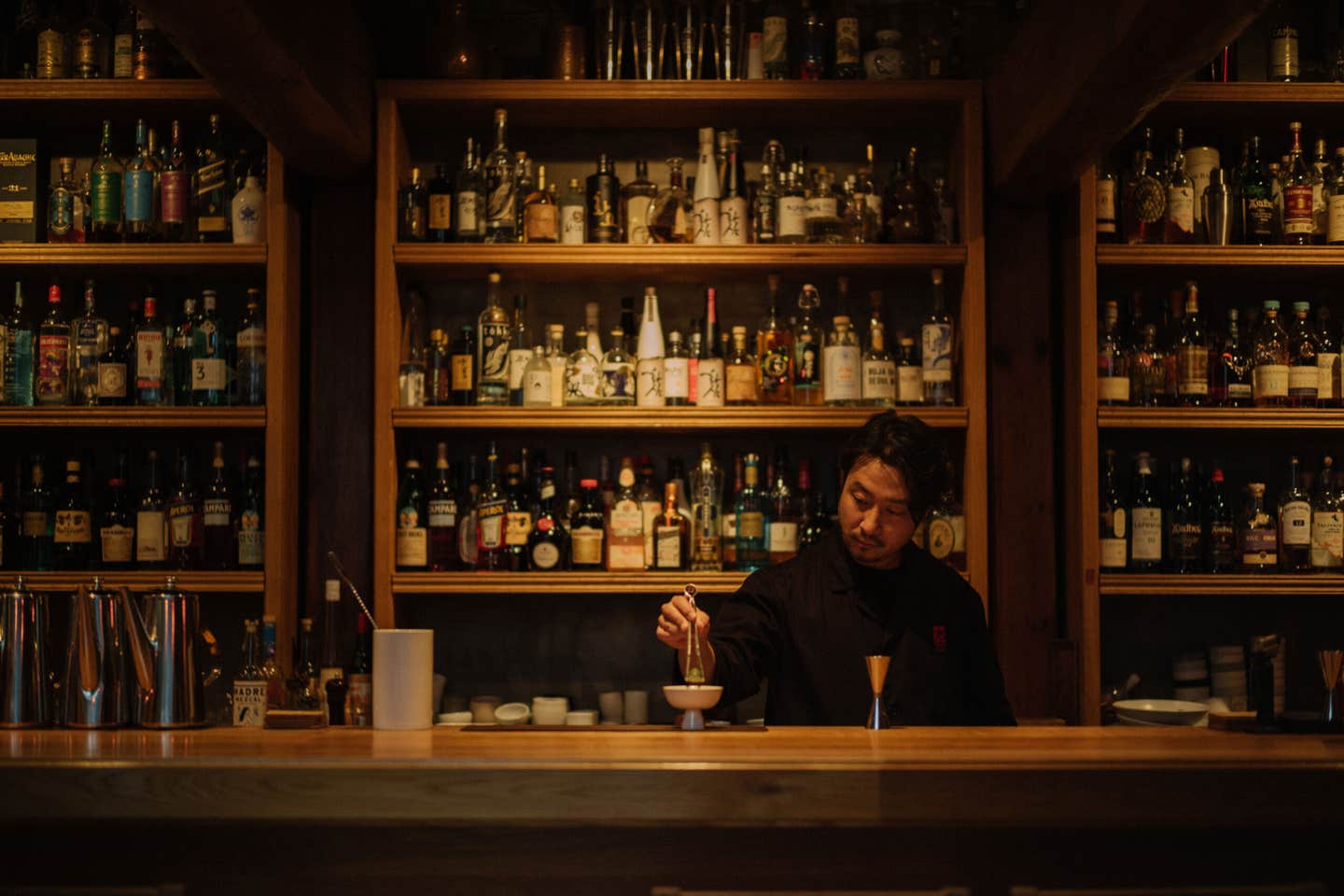

After COVID-19, interest in traditional spirits set off a proliferation of brick-and-mortar bottle shops. According to the Korea Traditional Liquor Association, the number of retail locations nationwide that specialize in traditional sool grew from a pre-pandemic handful to a whopping 120 today. For curious drinkers who aren’t ready to commit to an entire bottle, there’s also no shortage of establishments spotlighting craft heritage liquors, from makgeolli tasting bars to Korean spirit-focused cocktail joints to gastropubs with curated sool pairings. As demand continues to grow, it’s never been a more exciting time to explore this niche industry. From hardcore traditionalists to rogue experimentalists, here, five sool makers share the passion behind their own expressions of the craft.
Andong, North Gyeongsang Province
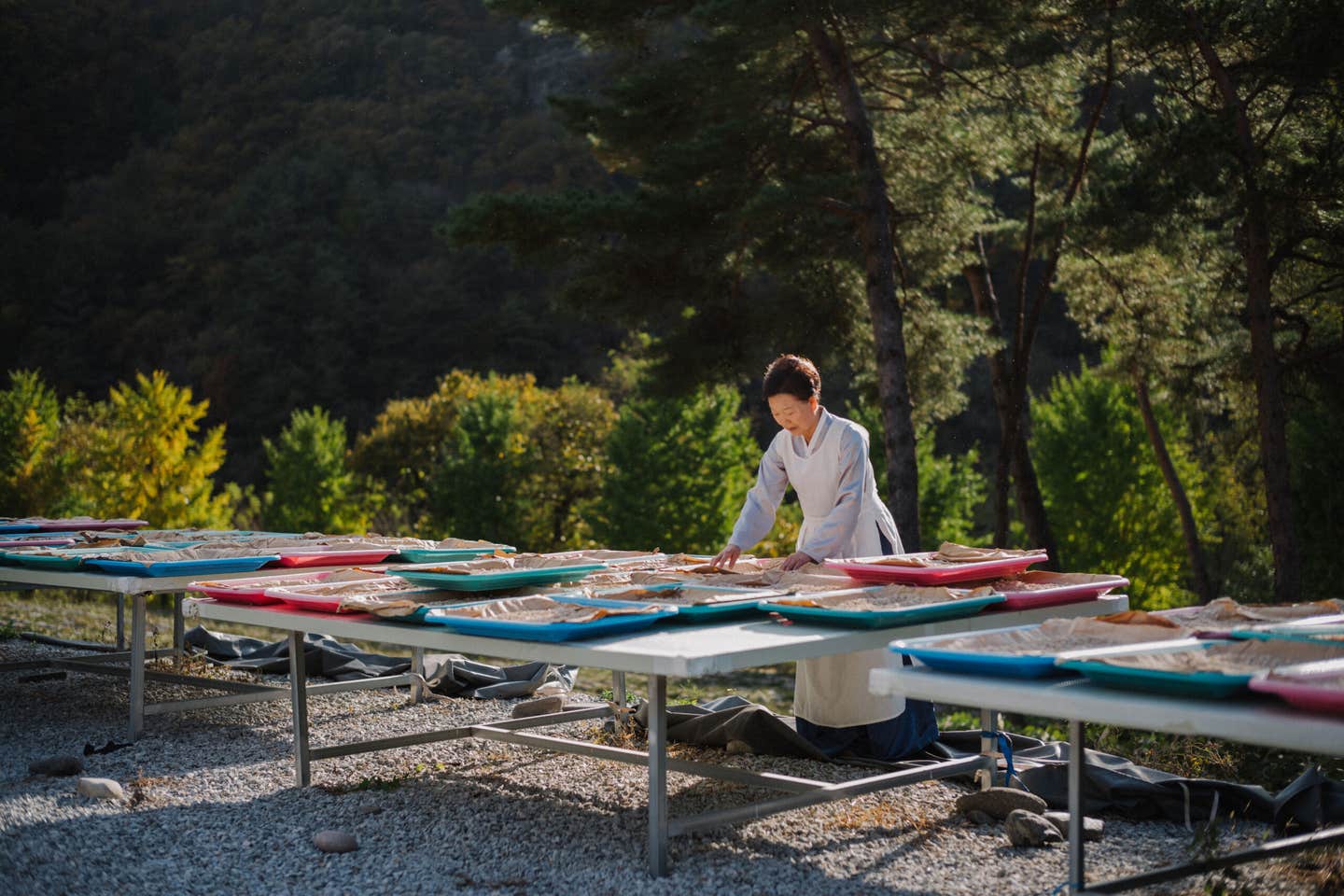

Won-jeong Lee, an 18th-generation family matriarch, makes her sool from a 600-year-old recipe. Her brewery’s name, Ellyeop Pyunjoo, translates to “a single, small leaf-like boat,” from a 1547 poem by Nongam, a Joseon Dynasty scholar—and Lee family ancestor. The brewery is located at Nongam Jongtaek, the family’s historic, nature-steeped estate in the city of Andong, where Lee makes use of local rice, nuruk dried in the sun for 30 days, spring water from the nearby mountains, and firewood collected from the surrounding pine trees. “The nuruk, rice, water, and air all have to be good,” says Lee’s husband Sung-won. “But most importantly, you need the utmost care. Even if it’s the same recipe, the sool tastes better when she makes it.”
Lee learned how to brew and distill from her mother-in-law: “She would say, ‘It’s just like raising a baby,’” Lee recalls. “So that’s how I approach it, always with a sincere heart.” This includes telling the hangari how lovely they are to encourage proper fermentation and taking copious daily notes. “I’m always thinking about how I can improve the sool. That’s my forever homework,” she says.


Lee feels even more pressure now that she’s selling to the public. Up until 2020, when her family convinced her to put bottles on the market for the first time, only they had the privilege of enjoying Lee’s takju, cheongju, and soju. The spirits have since become the crown jewel of beverage lists at Michelin-starred restaurants in Seoul. “She’s going to be a legend when she dies,” says Sung-won before adding: “She’s already a legend.”


In the basement of an office building in Seoul’s Mapo District, Hyun-jong Kim is trying to keep a master’s legacy alive. Kim had been making soju under the legendary Taek-sang Kim (no relation), a 10th-generation distiller, for eight years when Taek-sang passed away suddenly in 2021. Taek-sang learned how to brew and distill from his mother and passed down her knowledge and centuries-old family recipes through workshops at his studio. Hyun-jong now pays homage to his mentor by running a full-blown Samhae Soju academy at the distillery. “Our students aren’t coming to learn,” he jokes. “They’re coming because it’s the cheapest way to drink our soju.”


Samhae is named for its traditional three-stage brewing process (“sam” means three) that begins on the Chinese zodiac calendar’s Day of the Pig (“hae” refers to the Sino Korean character for pig). The labor-intensive spirit dates back to the Goryeo Dynasty (918–1392), when the beverage was a luxury only enjoyed by the noble class. Hyun-jong makes his version with rice, water, and nuruk, but has also started producing sojus that incorporate other native Korean ingredients, like chrysanthemums and buckwheat. “People’s taste buds are so used to green-bottle soju that everyone is looking for something clean and flavorless,” says Hyun-jong. “Samhae Soju is the complete opposite of that—it’s got character, it’s complex. But because Koreans have been drinking commercial soju for so long, ours is a tough sell.” He’s hoping that the academy helps change that at home and abroad. With students from all over the world and Samhae now being exported in small quantities to the U.S., he’s well on his way.
Ulsan, South Gyeongsang Province


After attending university in New York City, architect Min-kyu Kim moved back to his rural hometown in Ulsan in 2009 to start a brewery with his family’s makgeolli recipe. While Kim designed everything from the building to the bottles, he left the sool to his mother Bok-soon, who passed away in 2024. Boksoondoga is named after her, and still follows the time-honored techniques that Bok‑soon learned from her mother-in-law: handwashing the rice 10 times, fermenting in hangari (Korean earthenware jars), and making their own nuruk. “My mom would go into the fermentation room and talk to the hangari,” says Kim. “She would listen to the sounds and touch the jars to check their temperature because the sool is alive.”


This adherence to tradition doesn’t mean the brewery is opposed to innovation. For Boksoondoga’s flagship product, Kim and his mother played with the natural carbonation that occurs during fermentation to create an effervescent makgeolli in the vein of champagne. When it comes to growing the business, Kim takes an unorthodox approach, bringing the brand to art fairs, museums, and cosmetics conventions—anywhere its spirits might surprise and delight. He also relentlessly pitched a retail concept to Korean train station authorities for two years before finally succeeding in 2020; the first Boksoondoga shop was such a hit that there are now five locations. Next on the docket: a second brewery, airport shops, a sikhye (sweet Korean rice drink) collab with Blue Bottle Coffee … and the list goes on. “I don’t limit Boksoondoga,” says Kim. “I think of us as a culture company, and makgeolli is just one part of it.”
Yongin, Gyeonggi Province


Founded by husband-and-wife team Joo-hwi Yi and Julia Bae in 2019, J&J Brewery is located in an old art gallery space in Yongin that belonged to Bae’s late parents. A former pianist who spent decades studying in the U.S., Bae joined the booze business out of love—for her partner, not the sool—and now handles design, marketing, packaging, and sales for the brewery, tasting bar, and café.
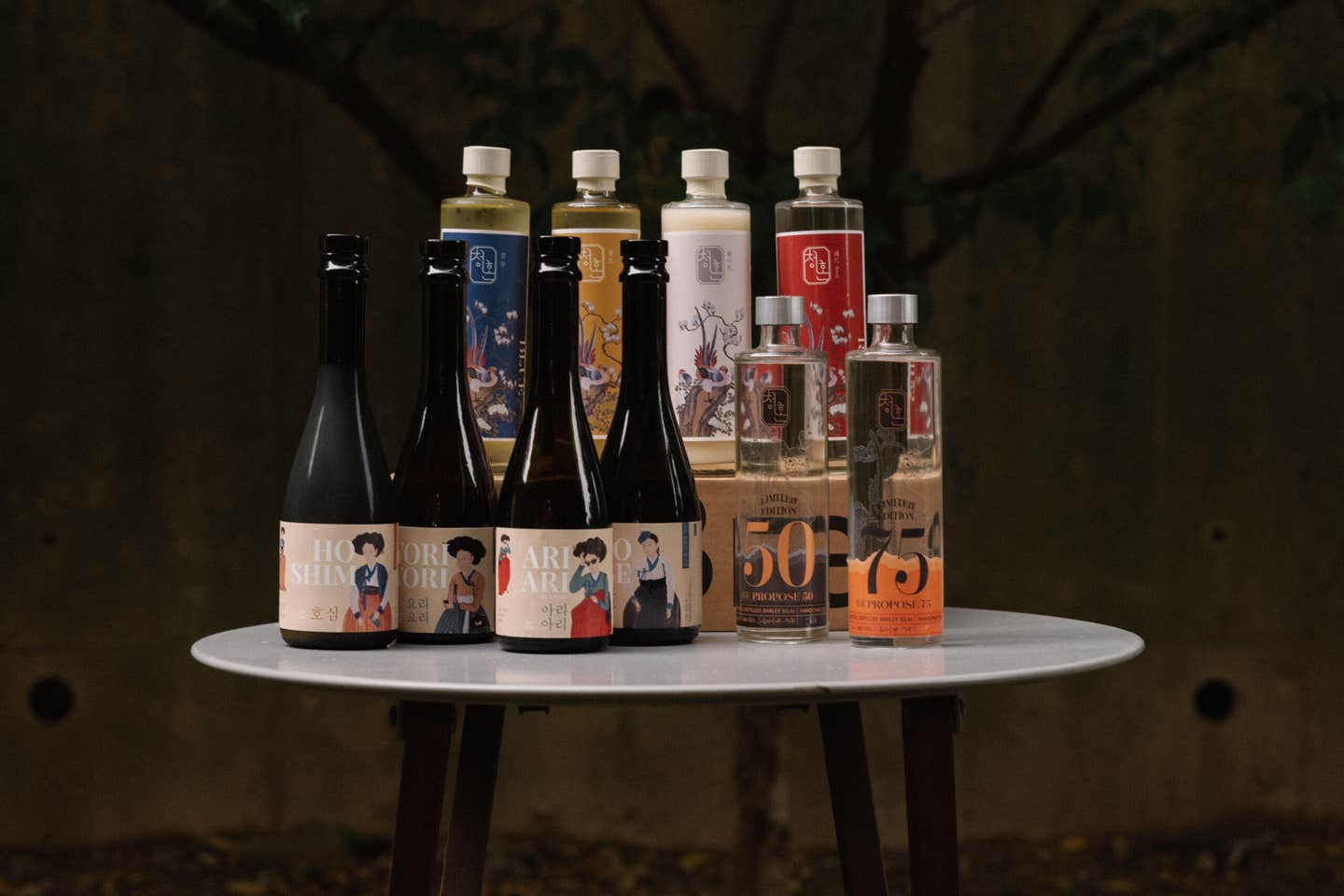

It was Yi who was passionate about the craft. He quit a corporate job in pharmaceuticals to pursue making sool in 2011, and now uses both traditional nuruk and modern yeast in his spirits, along with rice sourced from a farm 15 minutes away from the brewery. Unlike other craft brewers, instead of relying on the same base liquor to produce makgeolli, yakju, and soju, Yi insists on brewing each spirit separately with a different fermentation agent. “I think it’s the only way you can capture the nuances and individuality of each sool,” he says, “even though it complicates the process, it’s worth the effort.” J&J’s signature product is its dry and fruity gwahaju, which translates to “liquor that lasts the summer.” A type of yakju that dates back to 1670, gwahaju is fortified with soju to lengthen its shelf life. “It’s two spirits coming together to make something new and better,” Yi says. “Like a couple, so we named it ‘Proposal.’”
Yongin, Gyeonggi Province
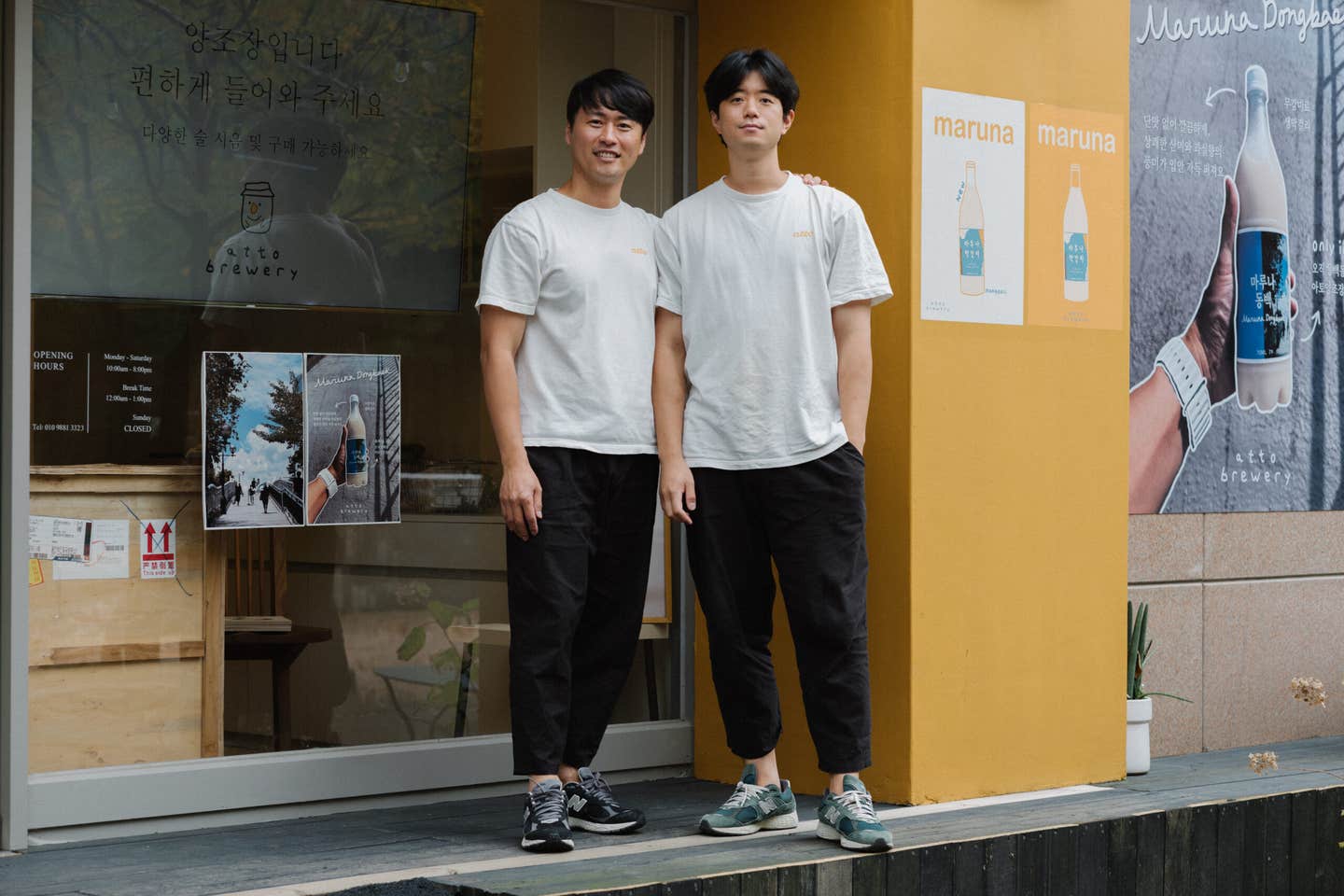

The first thing you notice about Atto Brewery & Studio is the constant foot traffic outside its glass storefront: parents pushing strollers, groups of students horseplaying, grandmas ambling down the street. According to CEO Do-hyeon Kwon and brewery director Hye-chan Park, this is by design. The duo opened Atto in an apartment complex in the bustling Dongbaek neighborhood of Yongin, the fastest growing city in South Korea, just south of Seoul, because they wanted to build a gathering place where residents could pop in as part of their regular routine. “Anytime someone walks by on their way to the grocery store or peers into the window,” says Park, “we invite them in for a free tasting.”


Kwon, a former golf coach, and Park, who has a background in filmmaking, started out as hobbyists and met on the first day of a craft distillation course. Once they perfected their sool recipes, they opened Atto in May 2023, making takju, makgeolli, and yakju the old-fashioned way—with just water, nuruk, and local rice—as well as with hyomo (yeast), which gives them more flexibility to tweak the flavor. “We use traditional and modern brewing techniques but only natural fermenting agents,” says Kwon. “It’s actually why we named the brewery Atto—after the Sino Korean characters for ‘right path.’” While he and Park are proud of their award-winning bestseller, a refreshing, traditionally brewed yakju akin to white wine, the real feather in their cap is being embraced by the community.
